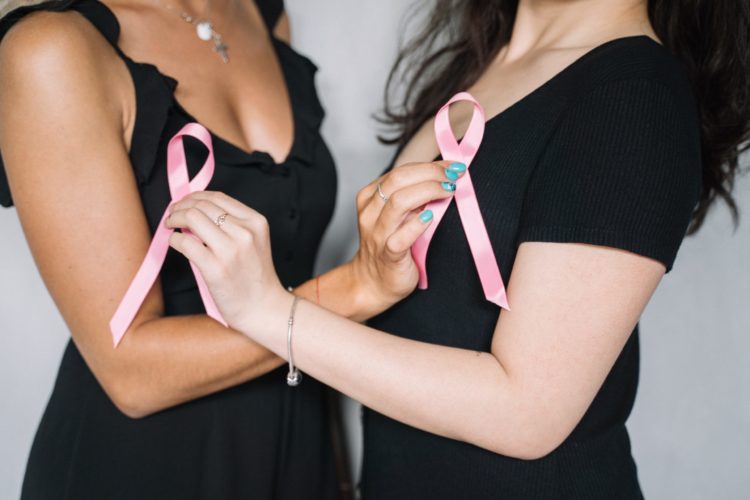
The Truth About Breast Cancer: Separating Fact from Fiction
Breast cancer is one of the leading causes of death for women worldwide. Despite its prevalence, there are still many myths and misconceptions about breast cancer. In this article, we will provide updated stats, facts and dispel some of the most common myths about breast cancer, as well as provide information on breast cancer screenings.
9 Facts About Breast Cancer You Should Know
- Breast cancer is the second most common cancer diagnosed in women in the United States. Skin cancer is first.
- In 2022, it is estimated that over 287,000 new cases of breast cancer will be diagnosed in women in the US alone.
- Female breast cancer is most common in middle-aged and older women (45-74).
- In 2019, there were an estimated 3,771,794 women living with breast cancer in the United States.
- Female breast cancer is the fourth leading cause of cancer death in the United States.
- Breast cancer is not just a women’s health issue – In 2017, there were about 2,300 new cases of male breast cancer and 500 deaths.
- There are certain risk factors that may increase your chance of developing the disease like age, family history, genetic mutations, obesity, alcohol consumption, smoking, and exposure to radiation or hormones.
- There are several different types of breast cancer, and the type you have will affect your treatment options.
- Early detection is key to surviving the disease. Breast cancer awareness month is a time to learn about the disease and how to protect yourself and your loved ones.
4 Myths about Breast Cancer You Need to Stop Believing
Myth #1: Breast cancer only affects women.
Breast cancer is not only a women’s disease. Men can get breast cancer, too. In fact, about 1 out of 100 breast cancer diagnoses in the US are found in men.
While the number of men diagnosed with breast cancer is small compared to the number of women diagnosed, it is still important to be aware that men can be affected by this disease. Years ago, actor Richard Roundtree was diagnosed with breast cancer. You can read more about his and other celebrities’ battle with breast cancer.
Myth #2: All breast lumps are cancerous.
There are many different types of breast lumps, and not all of them are cancerous. In fact, most breast lumps are benign (non-cancerous). Benign breast lumps are very common, and they can occur for a variety of reasons.
For example, benign breast lumps can be caused by:
Hormonal changes. Breast lumps are often more common during certain times in a woman’s menstrual cycle, or during pregnancy or menopause.
Fibrocystic changes. This is a condition that causes the breasts to feel lumpy and tender. It’s usually not harmful.
Cysts. These are fluid-filled sacs that can form in the breast. Cysts are usually benign, but they can sometimes be difficult to distinguish from cancerous lumps.
In most cases, benign breast lumps don’t cause any symptoms. However, some women may experience pain or tenderness in the area of the lump.
Myth #3: Wearing a bra increases your risk of developing breast cancer.
So why do some people believe that wearing a bra increases your risk of developing breast cancer? One theory is that bras constrict the lymphatic system, which could lead to an accumulation of toxins in the breasts. However, there is no scientific evidence to support this claim.
Another theory is that underwire bras can cause irritation and inflammation in the breasts, which could potentially lead to the development of cancerous cells. Again, there is no scientific evidence to support this.
Myth #4: Breast self-exams are not effective in detecting breast cancer early
Breast self-exams are a great way to detect breast cancer early. By doing a self-exam, you are able to feel for any lumps or changes in your breasts. If you find anything unusual, it is important to see a doctor right away.
Early detection is key when it comes to breast cancer. The earlier the cancer is caught, the better the chances of surviving. Breast self-exams can help save lives.
What You Should Know About Breast Cancer Screenings
Preparing For Screening
There are several things that you can do to prepare for a breast cancer screening.
First, you should make sure that you are aware of the signs and symptoms of breast cancer. This way, you will be able to tell if something is wrong and seek medical help right away.
Second, you should know your family history of breast cancer. If anyone in your family has had breast cancer, you may be at a higher risk and may need to start screenings at an earlier age.
Third, you should talk to your doctor about your risk factors for breast cancer. This includes things like your age, weight, alcohol consumption, and whether you have ever been pregnant. Based on this information, your doctor can determine if you need to have more frequent or earlier screenings.
How Often Should You Get Screened
It is recommended that women of average risk for breast cancer have a mammogram every year starting at age 40. If you are at high risk for breast cancer, you may need to start having mammograms before age 40 or get them more often.
You and your doctor can decide when to start having mammograms and how often to get them based on your risk factors.
Risk factors that can affect how often you need a mammogram include:
-Your age
-Your personal history of breast cancer or ductal carcinoma in situ (DCIS)
-Your family history of breast cancer
-Your breast density
-Previous abnormal mammograms
-Radiation exposure, such as from radiation therapy to the chest for another cancer
If you have any questions about how often you should get a mammogram, talk to your doctor.
Find Support
You can read about celebrities who battled breast cancer.
There are many resources available to help. For more information on breast cancer, please visit the National Cancer Institute website or The Susan G. Komen Breast Care Helpline 1-877 GO KOMEN (1-877-465-6636) Email: helpline@komen.org











